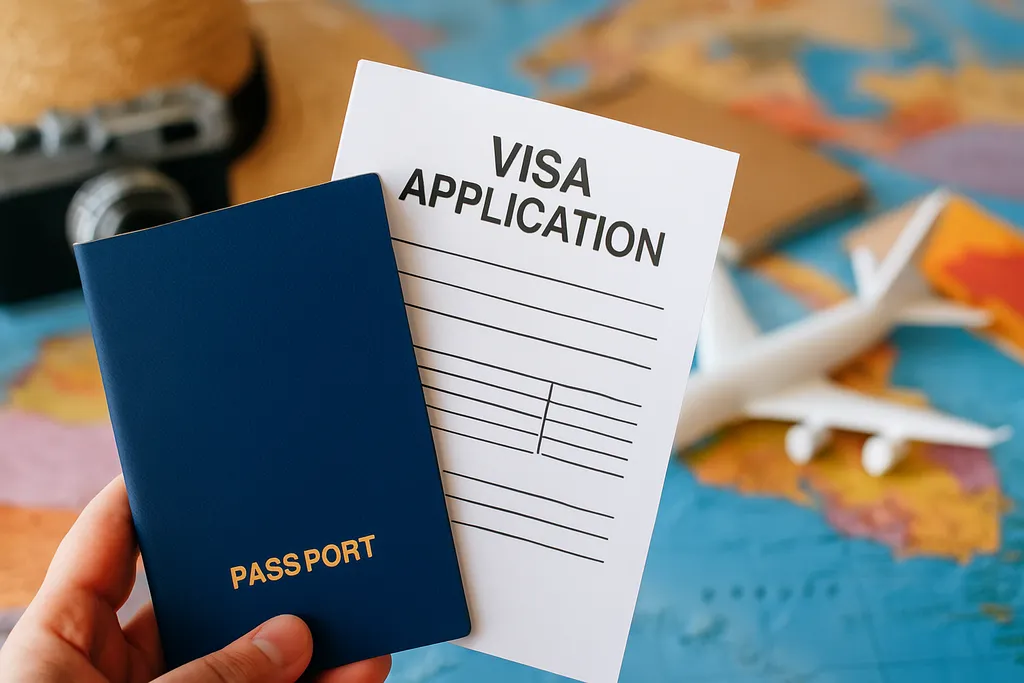How is international check-in different from domestic check-in?
- Wednesday, May 21, 2025, 10:53 (GMT+7)
How is international check-in different from domestic check-in?
Many first time international travelers find themselves confused or overwhelmed, and some even miss their flight simply because they assume the process is the same as for domestic travel. Holding a ticket, showing up at the airport, and heading to the counter might be enough for domestic flights. But when crossing national borders, everything becomes more complex, more strictly controlled, and requires more thorough preparation. Without a clear understanding, passengers may be denied exit, incur additional costs, or face urgent situations they are not prepared for.
The first thing to understand is the difference in documentation. For domestic flights, an ID card, citizen card, or driver’s license is usually sufficient for check-in. But for international flights, a valid passport with at least six months of remaining validity from the departure date is mandatory. Additionally, many countries require a valid visa or entry permit before passengers are allowed to proceed with check-in. Children traveling with adults need their own passport or legal proof of relationship. If a child is not traveling with parents, an official authorization letter verified by authorities is required.
Regarding airport arrival time, domestic flights typically require passengers to be present 90 to 120 minutes before departure. For international flights, it is advisable to arrive at least three hours in advance to allow enough time for more complex procedures, including document checks, baggage drop, exit clearance, and security screening.
Next is the check-in process. For domestic flights, passengers can easily check in via mobile apps, websites, self service kiosks, or counters without much hassle. However, for international flights, not all airlines support online check-in. Some only allow it after verifying passport and visa details. In many cases, passengers still need to go to the counter to finalize document verification, especially when checking in baggage or traveling to countries with stricter entry checks.
Baggage rules also differ significantly. Allowable weight and size limits can vary depending on the airline and international destination. Moreover, carry on luggage on international flights is subject to stricter control, particularly for liquids, electronic devices, power banks, medications, and food items. Beverages, cosmetics larger than 100ml, sharp objects, or high capacity batteries will be confiscated at security checkpoints. If you need to bring prescribed medication, it is best to include a prescription or medical certificate.
After completing check-in and baggage drop, international passengers must go through exit clearance. At this stage, officers will inspect passports, visas, and entry or exit stamps. In some airports, biometric scans such as fingerprints or facial recognition are also part of the process. Passengers should avoid using phones in this area to prevent being called back for additional checks. A serious, cooperative attitude and compliance with instructions are required.
After exit clearance, passengers proceed to the security screening area. Here, shoes must be removed, laptops and other electronic devices must be taken out of bags, and all liquid items must be properly presented. Each container must not exceed 100ml, and the total volume must be no more than one liter, stored in a transparent zip bag. It is recommended to prepare this bag in advance at home to avoid delays during inspection.
Once this step is completed, passengers enter the international departure zone, where boarding gates are located. It is important to note that boarding gates may change unexpectedly. Information on the ticket is only temporary. Therefore, always monitor the airport display boards to avoid missing your gate or being late. If traveling in a group, it is wise to assign one person to manage all documents and boarding passes. Children under 12 must travel with an adult under the same booking code for convenient check-in and assistance.
Common issues that may arise include failure to check in through the app, expired passports, incorrect names on documents, late arrivals, or missing valid visas. If the app fails, go straight to the airline's support counter for help. If you are late, and the counter is still open, request priority assistance. However, if the deadline has passed, the ticket will be canceled and a new one must be purchased. If a name error is discovered early, contact the airline to correct it. If it is found on the day of departure, the options are very limited.
One critical point to remember is that some countries do not allow transit without a transit visa, or require a return ticket or confirmed hotel booking at the destination. Therefore, it is essential to research the entry requirements of your destination beforehand. Some airlines verify this information during check-in and have the right to refuse boarding if conditions are not met.
A helpful tip: When traveling as a group, use a single booking reference to make it easier to check in together and avoid being split up at the gate. If you cannot use the app or do not receive a boarding QR code, go directly to the counter and ask for a printed boarding pass. Do not wait until the last minute, as priority counters are often crowded.
International check-in involves more steps than domestic travel, but it is entirely manageable with proper preparation. Keep documents organized, double check ticket and destination information, be aware of check-in time limits, and never overlook any step, no matter how small. Always ensure the name on your ticket matches your passport and visa exactly, or you may be denied boarding even with a valid ticket.
Understanding the differences between international and domestic check-in not only helps passengers save time and avoid risks but also ensures a smoother journey from the very beginning. Following proper procedures demonstrates responsibility and a serious attitude toward the trip. Check-in is not just about getting a boarding pass, it is the first legal step to securing your right to fly.

 CHECKIN.VN
CHECKIN.VN








Share on